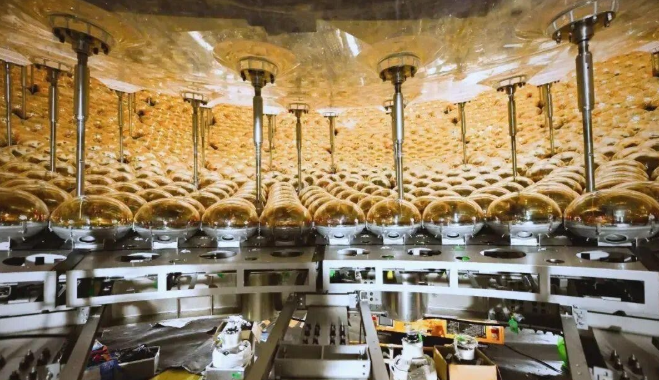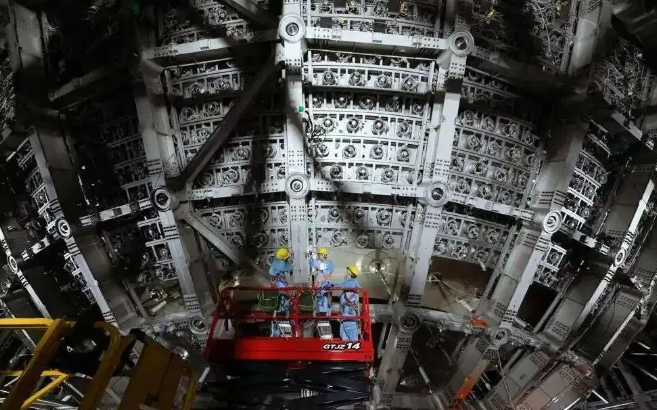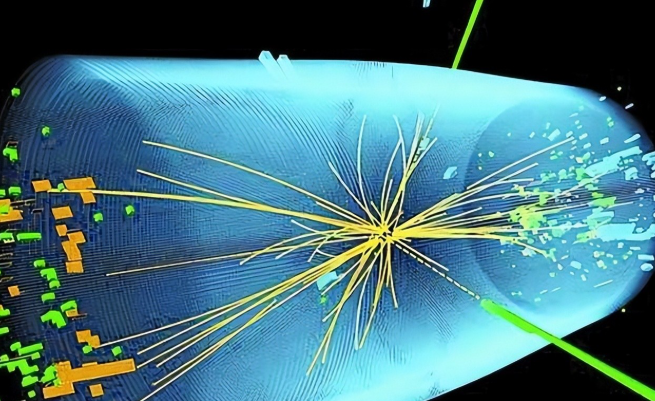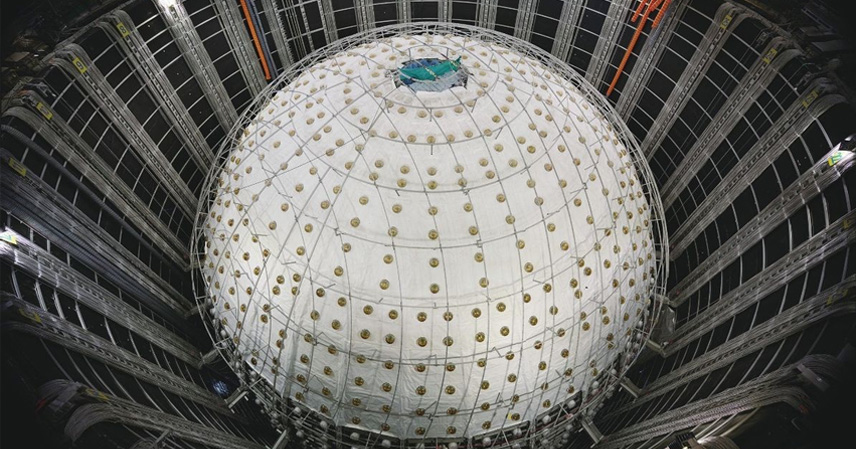Recently, China achieved a groundbreaking scientific milestone—the world’s first ultra-large-scale neutrino detector has officially been put into operation.
This is not just about detecting neutrinos; it represents a comprehensive upgrade across multiple fields, including physics, medicine, and military applications.
Neutrinos, mysterious particles that can penetrate anything—even the Earth itself—have long eluded detection. Until now. China’s latest “black technology” has broken this scientific bottleneck.
A particle that can pass through the Earth? Even the U.S. doesn’t have it.

Breakthrough in Neutrino Detection Technology
Neutrinos, often called the “ghost particles” of the universe, are extremely light and rarely interact with matter. This makes them incredibly difficult to detect.
Every second, countless neutrinos pass through our bodies, yet we never notice them.
Their defining feature is penetration: they can pass through all forms of matter, including the densest substances like iron or lead.
This unique ability makes neutrinos an extraordinary “detection tool,” capable of probing through the Earth and even observing objects on the other side.
Although neutrinos have long been discussed in theoretical physics and their existence confirmed, capturing them has always been one of science’s greatest challenges.
Their interactions with matter are so rare that only highly sensitive detectors can pick them out from overwhelming background signals. This has been the central obstacle of neutrino research.
China’s latest breakthrough comes from a major research project in Jiangmen, Guangdong—the world’s first ultra-large-scale neutrino detector.
This device, with its globally unique core technology, not only solved a major challenge in physics but also overcame obstacles in equipment construction and environmental stability.

How the Detector Works
To reduce interference, the entire detector is buried 700 meters underground, shielding it from surface noise and signals to collect pure neutrino data.
At its heart lies the world’s largest organic glass sphere, filled with 20,000 tons of liquid scintillator.
As neutrinos pass through the liquid, they occasionally collide with atoms, releasing faint flashes of light.
These signals are captured by 45,000 photomultiplier tubes covering the sphere’s surface, which convert them into electrical signals for analysis.
To ensure stability, the detector is surrounded by 35,000 tons of ultra-pure water. This layer both cools the system and isolates it from unwanted interference.
Building such a facility was a massive undertaking. It required extreme engineering precision: 263 precisely spliced panels, each only 12 centimeters thick—thinner than an eggshell yet able to withstand enormous liquid pressure.
The structure uses 120,000 specially designed stainless steel rivets to maintain cleanliness, as even the slightest contamination would compromise the data.
To avoid introducing pollutants, welding was prohibited, and only high-precision riveting methods were used.

Applications of Neutrino Technology
This breakthrough has far-reaching implications.
Military
Neutrino radar could revolutionize military reconnaissance. Submarines hidden deep underwater, missiles in mountain bunkers, and underground bases could all be revealed.
Because neutrinos pass unhindered through the Earth, stealth technologies like invisible aircraft or submarines would lose much of their advantage.
This would transform naval warfare, aerial reconnaissance, and even global defense systems.
Medicine
In healthcare, neutrino detection could provide a radiation-free alternative to traditional imaging methods like X-rays and CT scans.
Unlike conventional techniques, neutrinos do not harm the body. They can penetrate human tissue and provide accurate internal data without radiation risk.
Future check-ups might rely solely on neutrino scans, making medical imaging safer, faster, and more precise.

Energy Exploration
Neutrino technology could also transform energy exploration.
By penetrating the Earth, neutrinos can map underground resources like oil and natural gas without drilling.
This would reduce wasteful exploration, improve efficiency, and provide deeper insights into the Earth’s structure and resource distribution.
It could also help scientists better understand the planet’s composition and energy reserves.
The Rise of Chinese Science and Technology
China’s technological rise has been striking in recent years—from high-speed rail and 5G communications to space exploration and deep-sea research.
The neutrino breakthrough adds another milestone to this trend, demonstrating China’s growing scientific power and international competitiveness.
This achievement is the result of decades of persistent effort by Chinese researchers. From theoretical work to detector construction, the process required mastery across multiple disciplines and extreme engineering precision.
It reflects not just the success of one project but a “qualitative leap” in China’s overall innovation capability.
By integrating advanced engineering, materials science, and systems technology, China has shown it can master and apply cutting-edge science on a global level.
This transformation—from gradual accumulation to decisive breakthrough—marks a new stage in China’s role as a leading technology power.

Conclusion
The breakthrough in neutrino detection signals China’s leadership in global science and technology.
Its applications stretch from military defense to medicine, from energy exploration to basic research. Neutrino technology could reshape multiple industries and even alter humanity’s way of understanding the world.
As this technology develops, new applications will emerge, ushering in a new era of science.
China’s rise in technology is not just a national milestone but a force that the world cannot ignore.
Today, the “ticket” to neutrino technology is in China’s hands. Tomorrow, it may reshape the global technological landscape.
References
- Jiangmen Neutrino Observatory project reports
- Chinese Academy of Sciences publications on neutrino detection
- Global physics community statements on neutrino research



